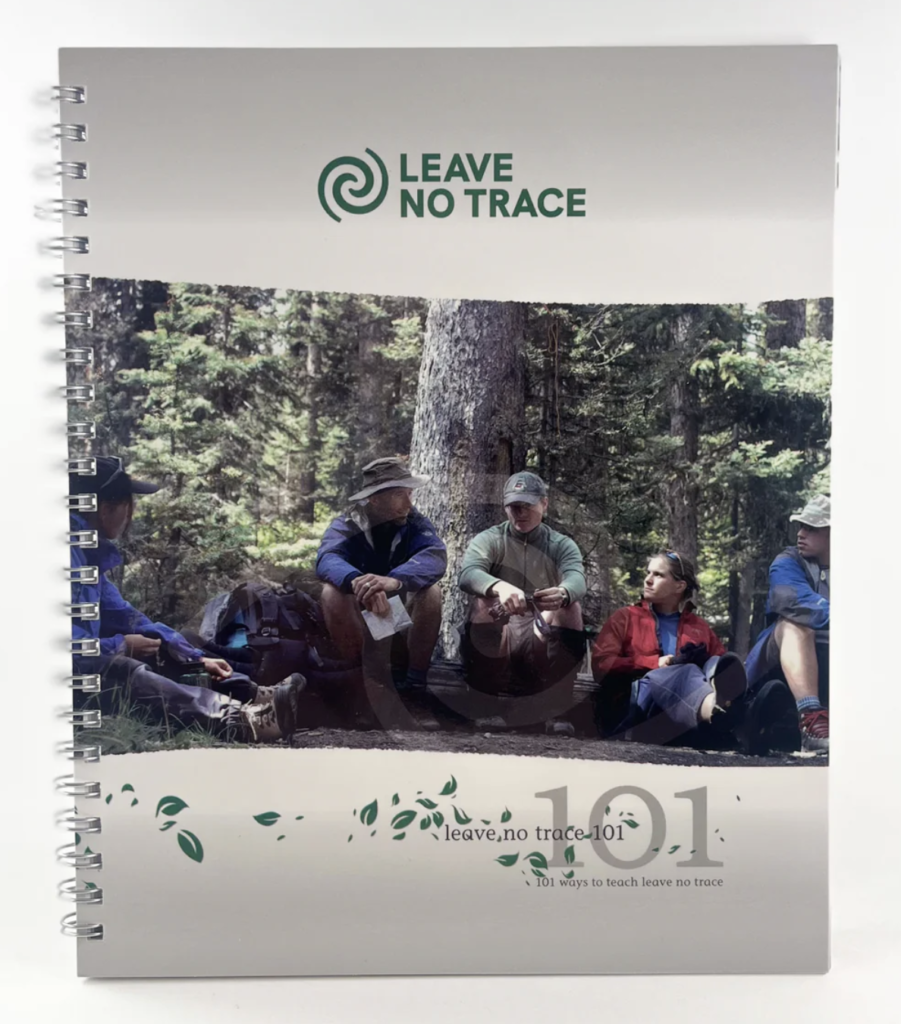101 Ways to Teach Leave No Trace翻訳プロジェクト参画依頼

今年LNTJでは、LNTインストラクターのワークショップ開催支援の一環として、LNTのアクティビティ集である「LNTを伝える101の方法」の翻訳事業を行うこととなりました。このアクティビティ集は、LNT7原則の全体の理解と、LNTのそれぞれの原則に関する101のアクティビティで構成されています。それぞれのアクティビティは、目的、準備、対象、進め方、時間で構成されているわかりやすいパッケージドプログラムになっており、LNT1インストラクターが、ワークショップを開催したり、L1コースのモデルティーチングとして大変役に立ちます。つきましては、ティーチング経験豊かなL2、L3インストラクターの皆さんに、本事業へのご参画を期待いたします。翻訳者は、本書に翻訳者として末長く掲載され、皆様の業績とすることができます。また、全101章のアクティビティがありますが、無料贈呈の1冊に加え、5章につき一冊本書を追加贈呈させていただきます。以下の要項をご確認いただき、より多くの方のご参画をお待ちしております。
募集要項
1)募集期間:2024年9月30日まで
2)募集対象:LNTレベル2、3インストラクター(2024年受験者を含む)
3)募集人数:最大20名
4)翻訳章:最低5章からとし、上限は定めません。希望をもとに事務局で割り振ります。
5)翻訳提出:2024年12月24日まで
6)予備校正:2025年1月初旬に修正を依頼する場合があります。提出は1月末をめどとします。
7)入稿日:2025年3月31日まで
翻訳要領
1)ですます調とします。
2)誰でもわかりやすい平易は文章としてください。センテンスも原文に拘らずできる限り短くしてください。
3)英語の直訳ではなく、パッケージドプログラムとしての理解のしやすさを優先してください。
4)各自、どのようなアクティビティなのか理解した上で、翻訳を開始してください。
5)タイトルは、アクティビティの内容を吟味し、原文を参考にしつつ、命名してください。一つに決定できない場合は、複数の案でも構いません。
6)翻訳ソフトを活用しても問題はありませんが、内容や文脈を吟味せずに、そのまま掲載することは避けてください。
7)提出前に、からずピアプルーフリーディング(同僚の専門家による校正)を行なってください。
8)原則、校正、タイトルの最終決定はプロジェクト事務局で行います。
モデル翻訳
章は約200〜1000単語までさまざまです。担当者はできる限り負担が均一になるように事務局で調整しますのでご一任んください。
031(768単語)
Web Of Life
Objective: To introduce the group to the natural world or ecosystem and illustrate the degree of interconnectedness that exists between the living and non-living components of the system.
Materials: A large ball of string and a series of 3 x 5 cards with a variety of plants, animals and natural features on them (text or photos). It is helpful to laminate the cards for durability and weatherproofing. Be sure to include cards for soil, a stream or pond, dead trees, downed trees, as well as living components that span the food chain, etc.
Audience: Ages 7 and up. Group size of 10 or more. The larger the group (up to about 16) the better.
Directions: While two instructors is ideal with this activity, it can be facilitated with only one person, depending on the age and size of participants. Arrange the group in a circle and hand a 3 x 5 card to each participant. Make sure to include the soil, a water feature and at least one dead component in the cards you initially hand out.
Begin the activity by starting with the soil. Have the “soil person” hold one end of the string and then look at all of the available cards and determine who has a direct connection to the soil. A direct connection is defined as needing or using the particular organism or feature for food, shelter, support or some other life cycle need. As each card is named, run the string ball to that person and back again. Repeat this for every direct connection as you work your way through all of the cards.
Then choose another person and repeat the process using only direct connections. Work up the food chain with the activity to help illustrate that a lot of the smaller or less glamorous creatures and organisms play a very key role in the balance of the natural ecosystem. Those organisms at the higher end of the food chain have fewer, but more direct connections into the system balance.
Utilize the dead system components (dead logs, standing dead trees, etc.) relatively early on in the process, as this helps establish that the ecosystems foundation is composed of both living and non-living components.
Once you have worked your way up the food chain, ask the participants who has the most and least direct connections. This can be accomplished by having the participants count the numbers of string that they are holding. Discuss.
Have one leader walk into the middle of the string web, gently creating tension on several of the string connections. This can be related to the presence of man as he begins to make his first impacts in the ecosystem. Ask the group who is feeling the stress or harder pull from the action of the leader and discuss why that part of the natural world might feel the stress. The activity can be concluded at this point for younger age groups.
Randomly select a member of the circle to leave, signifying the death or removal of that species from the natural system. Make note of how many direct linkages or connections are severed. Discuss the effects of this action from both the direct effects viewpoint as well as an indirect effects point of view.
Lastly, relate the interconnectedness of the natural world to the principles of Leave No Trace as a foundation for further exploring each principle.
Below is a list of potential card ideas:
Soil, downed log, standing dead three, conifer tree, pond or stream, grass, wildflowers, fish, frog, snake, robin, blue jay, woodpecker, coyote, eagle, hawk, raccoon, bear, deer, cougar, ground squirrels, mouse, grasshopper, fly, mosquito, ants, bees, etc.
Here are some important concepts to cover:
• The natural system or ecosystem is composed of both living and non-living features and in some systems the non-living play a very large role in the health and balance of the system.
• Water is essential for all organisms.
• Discuss the relationship of each linkage that is established so the group understands how the two organisms (cards) are connected in the natural world.
• Organisms at the top of the food chain (eagle, bear, cougar, etc.) should have fewer connections than soil, grass, bees, or other creatures that tend to exist in the middle of the food chain or web.
• Humans can have impacts on natural systems. Use both the approach of walking into the string web and seeing/feeling the string pull tighter on some connections than others as well as the selective removal of a particular organism (card) after the web is built.
Duration: 20 minutes to 1 hour.
031
生命のつながり
目的:自然界もしくは生態系における、生物と非生物のつながりについて理解します。
準備:毛糸玉1、さまざまな動物、植物、自然物の描かれたカード(ラミネート推奨)、カードには、生物のつながりだけではなく、土、小川、池、倒木などの非生物も入れましょう。
対象:7歳以上、10人以上。16名までのある程度大きな集団の方が望ましいです。
進め方:インストラクター2名が理想ですが、人数、対象によっては1名でも可能です。グループは円にして、異なった自然物の書いてあるカードを渡します。必ず1枚は、水、土などの非生物を入れてください。
アクティビティは土から始めます。「土の人」に毛糸の端を渡し、土と直接つながりのある自然物を選びます。直接のつながりとは、食物連鎖、隠れ家、共生関係などを意味します。土とつながりのある自然物に毛糸玉を渡し、全てのカードとつながるまでこの方法を繰り返します。
次に別の人を選びこの方法を繰り返します。食物連鎖だけではなく、微生物や非生物が自然界のバランスにとても重要な役割を果たしていることを理解します。また、食物連鎖の頂点にいる生物は、より直接的につながりに影響を及ぼしていることがわかります。
非生物(倒木、立ち枯れの木など)も早い段階で活用します。これにより生物と非生物の両方の構成要素で自然界が成り立っていることがわかります。
一度食物連鎖でつながりができたら、参加者の中から最も強いつながりある自然物と、最も弱いつながりの自然物を訪ねます。これは毛糸を持っている本数で判断できます。
次に、リーダーが、毛糸のウェブのある部分を引っ張ります。これは自然界に対する人間の影響を意味します。その後、張力を感じた参加者を尋ねます。これにより、人間の影響が生態系に連鎖していることがわかります。
次に、ランダムに選んだ参加者(自然物)を、自然界からなくなったとし、円から外します。それによりいくつのつながりが失ったか確認します。また、つながりを失った参加者(自然物)も、円から外れます。これにより、直接的なダメージと、間接的なダメージを知ることができます。
最後に、自然界のつながりを、LNTの7原則に紐付け、これからそれぞれの原則を学ぶための動機付けとします。
以下は、カードのアイデアです。
土、倒木、立ち枯れの木、針葉樹、池、小川、草、野生の花、魚、カエル、ヘビ、コマドリ、アオカケス、キツツキ、コヨーテ、ワシ、タカ、アライグマ、クマ、シカ、クーガー、ジリス、ネズミ、バッタ、ハエ、蚊、アリ、ハチなど。
以下、このアクティビティを通じて伝えられる概念です。
・自然界は、生物と非生物のつながりでできており、非生物が生態系のバランスに大きな役割を果たしています。
・水は、欠くことのできない自然物です。
・毛糸のつながりにより、2つの自然物がどのような関係でつながっているか理解できます。
・食物連鎖の頂点にいる生物(ワシ、熊、クーガーなど)は、食物連鎖の中位の生物よりも、非生物とのつながりが少ないです。
・人間が生態系に影響を及ぼしていること、毛糸を引っ張ったり、特定の自然物がなくなるアクティビティを通じて、理解できます。
時間:20分から1時間

